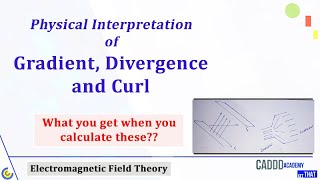To provide a physical interpretation of gradient divergence and curl curves, it is necessary to first analyse the geometry of the curves. For instance, a curve that points outward on the left side would often turn into a curve that points inward on the right side. Likewise, a curl on the right would often point inside rather than outwards. After then, the two will work together to generate no divergence at all.
Without wasting any more time, let’s get a little deep into the article to further understand the physical interpretation of gradient divergence and curl curves. Let’s go!
Calculate
Two key ideas are necessary for understanding vector calculus: the gradient and the curl. Both of these words allude to the change that occurs in a function as a function of distance. To be more specific, the gradient illustrates the portion of the vector that experiences the greatest rate of change. The term “curl” refers to the propensity of vectors that are near to one another to move in a circular path.
Compute
When we take into account the degree two identities of a vector field, we are also able to take into account the gradient divergence and curl characteristics. In particular, it is crucial to understand the curl characteristics to have a grasp on the link between gradients and curvature.
Interpret
Alterations in a physical quantity that occur between two points are called gradients. They may converge or diverge. For instance, air that escapes a hole in a tube will have a divergent flow, but the water that emerges from a faucet will have a convergent flow. They are also capable of being coiled or spinning around their axis.
Simplify
Mathematical concepts known as gradient divergence and curl are both concerned with the motion of a vector in some way. Curl refers to the movement of a vector along the path of a closed curve. The amount of curl at any given location is directly proportional to the amount of area in the closed circuit. The flux that passes through an area where an arbitrary volume element is enclosed is referred to as divergence.
The first thing you need to do to calculate the divergence or curl of a vector field is to know the formula for the field. After that, you will need to be familiar with the curl characteristics. After that, you can figure out how conservative a vector field is by using those attributes to make that determination.
Perform the computations on quantities
To begin calculating the quantities using Gradient Divergence, Curl, and Angle, the first step is to define the words that will be used. The metric for these quantities is g, and the square root of the metric is used as the denominator in the calculation. In the context of equations in mechanics involving tensor symmetry, these terms can be used interchangeably.
Conclusion:
We hope that was enough for you to get a decent understanding of the physical Interpretation of gradient divergence and curl curves. From here on, you can further take on your journey as per your interests or requirements about the subject matter.
 Pagalsogns.me
Pagalsogns.me




